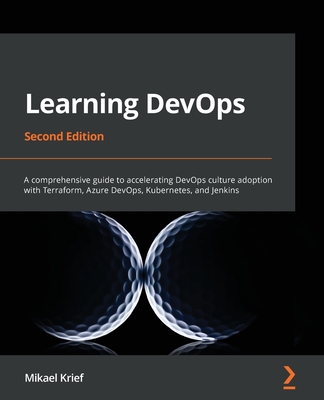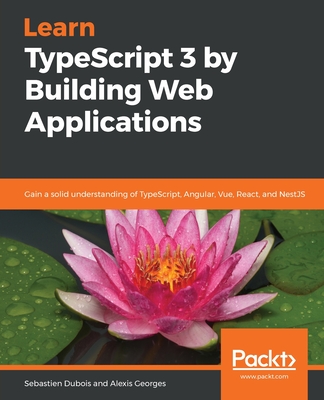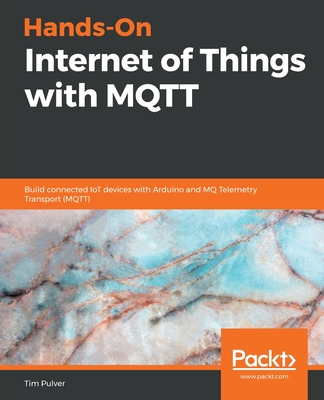The Object-Oriented Thought Process, 4/e (Paperback)
暫譯: 物件導向思維過程(第4版)
Matt Weisfeld
- 出版商: Addison Wesley
- 出版日期: 2013-03-13
- 售價: $1,880
- 貴賓價: 9.5 折 $1,786
- 語言: 英文
- 頁數: 336
- 裝訂: Paperback
- ISBN: 0321861272
- ISBN-13: 9780321861276
-
相關分類:
Object-oriented
-
其他版本:
The Object-Oriented Thought Process, 5/e (Paperback)
買這商品的人也買了...
-
 SQL 語法範例辭典
SQL 語法範例辭典$550$435 -
 Approximate Dynamic Programming: Solving the Curses of Dimensionality (Hardcover)
Approximate Dynamic Programming: Solving the Curses of Dimensionality (Hardcover)$4,710$4,475 -
 UML 物件導向系統分析與設計, 2/e
UML 物件導向系統分析與設計, 2/e$560$437 -
 Hadoop 技術手冊, 3/e (Hadoop: The Definitive Guide, 3/e)
Hadoop 技術手冊, 3/e (Hadoop: The Definitive Guide, 3/e)$880$695 -
 C++11 for Programmers, 2/e (Paperback)
C++11 for Programmers, 2/e (Paperback)$1,930$1,834 -
 MySQL, 5/e (Paperback)
MySQL, 5/e (Paperback)$2,400$2,280 -
 Allegro PCB Layout 16.X 實務
Allegro PCB Layout 16.X 實務$480$432 -
 Java 程式設計導論(第九版) (Introduction to Java Programming : Comprehensive Version, 9/e)
Java 程式設計導論(第九版) (Introduction to Java Programming : Comprehensive Version, 9/e)$680$537 -
 Arduino Nano 3.0 with ATMEGA328
Arduino Nano 3.0 with ATMEGA328$350$333 -
 最新數位通訊系統實務應用與理論架構-GSM、WCDMA、LTE、GPS, 2/e
最新數位通訊系統實務應用與理論架構-GSM、WCDMA、LTE、GPS, 2/e$330$297 -
 設計模式的解析與活用 (Design Patterns Explained: A New Perspective on Object-Oriented Design, 2/e)
設計模式的解析與活用 (Design Patterns Explained: A New Perspective on Object-Oriented Design, 2/e)$480$408 -
 Android App 程式設計教本之無痛起步, 2/e
Android App 程式設計教本之無痛起步, 2/e$480$379 -
 Unity 跨平台 3D 全方位遊戲設計(附基礎操作影音教學 / C# 與 JavaScript 雙語言範例檔)
Unity 跨平台 3D 全方位遊戲設計(附基礎操作影音教學 / C# 與 JavaScript 雙語言範例檔)$500$395 -
 Windows Server 2012 R2 系統建置實務
Windows Server 2012 R2 系統建置實務$680$537 -
 王者歸來-深入OSGi:Equinox 原理、應用與最佳實作
王者歸來-深入OSGi:Equinox 原理、應用與最佳實作$590$502 -
 Windows Server 2012 R2 網路與網站建置實務
Windows Server 2012 R2 網路與網站建置實務$690$545 -
 Android 程式設計入門、應用到精通 -第二版 (適用 Android L, 1.X~4.X, Android Wear 穿戴式裝置)
Android 程式設計入門、應用到精通 -第二版 (適用 Android L, 1.X~4.X, Android Wear 穿戴式裝置)$560$442 -
 程式設計人應該知道的 97 件事 | 來自專家的集體智慧 (97 Things Every Programmer Should Know: Collective Wisdom from the Experts)
程式設計人應該知道的 97 件事 | 來自專家的集體智慧 (97 Things Every Programmer Should Know: Collective Wisdom from the Experts)$400$316 -
 資料挖礦與大數據分析
資料挖礦與大數據分析$650$618 -
 iOS 8 程式設計實戰--205 個快速上手的開發技巧
iOS 8 程式設計實戰--205 個快速上手的開發技巧$500$395 -
 CSS3 網頁設計範例字典
CSS3 網頁設計範例字典$390$308 -
 網站滲透測試實務入門
網站滲透測試實務入門$380$300 -
 HTML5: The Missing Manual, 2/e (國際中文版)
HTML5: The Missing Manual, 2/e (國際中文版)$580$458 -
 Office 2013 雲端職場達人技:OneNote 數位筆記、Word 圖文編排、Excel 分析應用、PowerPoint 專業簡報、Outlook 人脈管理
Office 2013 雲端職場達人技:OneNote 數位筆記、Word 圖文編排、Excel 分析應用、PowerPoint 專業簡報、Outlook 人脈管理$600$468 -
 我的 Java 程式比你的快 10 倍─從概念到工具的極度優化
我的 Java 程式比你的快 10 倍─從概念到工具的極度優化$620$527
商品描述
The Object-Oriented Thought Process, Fourth Edition
An introduction to object-oriented concepts for developers looking to master modern application practices
Object-oriented programming (OOP) is the foundation of modern programming languages, including C++, Java, C#, Visual Basic .NET, Ruby, and Objective-C. Objects also form the basis for many web technologies such as JavaScript, Python, and PHP.
It is of vital importance to learn the fundamental concepts of object orientation before starting to use object-oriented development environments. OOP promotes good design practices, code portability, and reuse–but it requires a shift in thinking to be fully understood. Programmers new to OOP should resist the temptation to jump directly into a particular programming language (such as Objective-C, VB .NET, C++, C# .NET, or Java) or a modeling language (such as UML), and instead first take the time to learn what author Matt Weisfeld calls “the object-oriented thought process.”
Written by a developer for developers who want to make the leap to object-oriented technologies, The Object-Oriented Thought Process provides a solutions-oriented approach to object-oriented programming. Readers will learn to understand the proper uses of inheritance and composition, the difference between aggregation and association, and the important distinction between interfaces and implementations.
While programming technologies have been changing and evolving over the years, object-oriented concepts remain a constant–no matter what the platform. This revised edition focuses on interoperability across programming technologies, whether you are using objects in traditional application design, in XML-based data transactions, in web page development, in mobile apps, or in any modern programming environment.
“Programmers who aim to create high quality software–as all programmers should–must learn the varied subtleties of the familiar yet not so familiar beasts called objects and classes. Doing so entails careful study of books such as Matt Weisfeld’s The Object-Oriented Thought Process.”
–Bill McCarty, author of Java Distributed Objects, and Object-Oriented Design in Java
Contents at a Glance
1 Introduction to Object-Oriented Concepts
2 How to Think in Terms of Objects
3 Advanced Object-Oriented Concepts
4 The Anatomy of a Class
5 Class Design Guidelines
6 Designing with Objects
7 Mastering Inheritance and Composition
8 Frameworks and Reuse: Designing with Interfaces and Abstract Classes
9 Building Objects and Object-Oriented Design
10 Creating Object Models
11 Objects and Portable Data: XML and JSON
12 Persistent Objects: Serialization, Marshaling, and Relational Databases
13 Objects in Web Services, Mobile Apps, and Hybrids
14 Objects and Client/Server Applications
15 Design Patterns
商品描述(中文翻譯)
《物件導向思維過程(第四版)》
《物件導向概念的介紹,適合希望掌握現代應用實踐的開發者》
物件導向程式設計(OOP)是現代程式語言的基礎,包括 C++、Java、C#、Visual Basic .NET、Ruby 和 Objective-C。物件也構成了許多網頁技術的基礎,例如 JavaScript、Python 和 PHP。
在開始使用物件導向開發環境之前,學習物件導向的基本概念至關重要。OOP 促進良好的設計實踐、程式碼可攜性和重用,但要完全理解它需要思維的轉變。對於初學 OOP 的程式設計師來說,應該抵制直接跳入特定程式語言(如 Objective-C、VB .NET、C++、C# .NET 或 Java)或建模語言(如 UML)的誘惑,而應首先花時間學習作者 Matt Weisfeld 所稱的「物件導向思維過程」。
《物件導向思維過程》是由一位開發者為希望轉向物件導向技術的開發者撰寫的,提供了一種以解決方案為導向的物件導向程式設計方法。讀者將學會理解繼承和組合的正確使用、聚合和關聯之間的區別,以及介面和實作之間的重要區別。
儘管程式設計技術多年来不斷變化和演進,物件導向概念仍然是一個恆定的存在——無論平台如何。本修訂版專注於跨程式設計技術的互操作性,無論您是在傳統應用設計中使用物件、在基於 XML 的數據交易中、在網頁開發中、在行動應用中,或是在任何現代程式環境中。
「旨在創造高品質軟體的程式設計師——所有程式設計師都應如此——必須學習這些熟悉但又不那麼熟悉的生物,稱為物件和類別的各種微妙之處。這需要仔細研究像 Matt Weisfeld 的《物件導向思維過程》這樣的書籍。」
——Bill McCarty,《Java 分散式物件》和《Java 中的物件導向設計》作者
目錄一覽
1 物件導向概念介紹
2 如何以物件為思考方式
3 進階物件導向概念
4 類別的解剖
5 類別設計指導方針
6 使用物件進行設計
7 精通繼承和組合
8 框架與重用:使用介面和抽象類別進行設計
9 建立物件與物件導向設計
10 創建物件模型
11 物件與可攜式數據:XML 和 JSON
12 持久物件:序列化、編組和關聯數據庫
13 網路服務、行動應用和混合應用中的物件
14 物件與客戶端/伺服器應用
15 設計模式






























